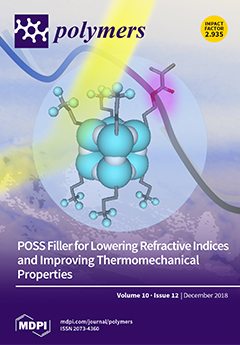Four Zn metal–organic frameworks (MOFs), {[Zn
2(2,6-ndc)
2(2-Pn)]·DMF}
n (
1), {[Zn
2(cca)
2(2-Pn)]·DMF}
n (
2), {[Zn
2(thdc)
2(2-Pn)]·3DMF}
n (
3), and {[Zn
2(1,4-ndc)
2(2-Pn)]·1.5DMF}
n (
4), were synthesized from zinc nitrate and
N,
N′-bis(pyridin-2-yl)benzene-1,4-diamine (2-Pn) with naphthalene-2,6-dicarboxylic acid (2,6-H
2ndc), 4-carboxycinnamic acid (H
2cca), 2,5-thiophenedicarboxylic acid (H
2thdc), and naphthalene-1,4-dicarboxylic acid (1,4-H
2ndc), respectively. MOFs
1–
4 were all constructed from similar dinuclear paddlewheel {Zn
2(COO)
4} clusters and resulted in the formation of three kinds of uninodal 6-connected non-interpenetrated frameworks. MOFs
1 and
2 suit a topologic 4
8·6
7-net with 17.6% and 16.8% extra-framework voids, respectively,
3 adopts a pillared-layer open framework of 4
8·6
6·8-topology with sufficient free voids of 39.9%, and
4 features a
pcu-type pillared-layer framework of 4
12·6
3-topology with sufficient free voids of 30.9%. CO
2 sorption studies exhibited typical reversible type I isotherms with CO
2 uptakes of 55.1, 84.6, and 64.3 cm
3 g
−1 at 195 K and
P/
P0 =1 for the activated materials
1′,
2′, and
4′, respectively. The coverage-dependent isosteric heat of CO
2 adsorption (
Qst) gave commonly decreased
Qst traces with increasing CO
2 uptake for all the three materials and showed an adsorption enthalpy of 32.5 kJ mol
−1 for
1′, 38.3 kJ mol
−1 for
2′, and 23.5 kJ mol
−1 for
4′ at zero coverage.
Full article






